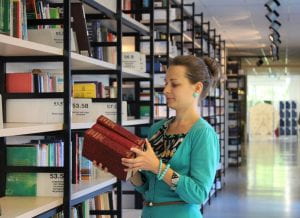
Previously whilst working as a teacher in charge of the library and having had no formal training in the collection development processes I found myself overwhelmed with where to start for resourcing the curriculum. I have since discovered there are several steps in the process. I will briefly outline these and what I did and didn’t do in the past.
- Know the school community – if there are wide variances in reading levels different resources on the same subject may need to be purchased (Stephens & Franklin, 2013, p.36). Being new to the school (and not wanting to make waves or be seen as pushy) I had no idea what the requirements were of the school community. It was only later in the year after I had had all of the classes for the year and built a rapport with some of the teachers that I started to find out different the different reading levels of students. One of the best sources for information was one of the learning support officers who I used to encourage to use the library for her services (much better than sitting in the cold hallways!). After discussions with her I was able to order in hi-lo books for some of the stage 3 students for her to use for individual reading with them. Without speaking to the learning support officer I would not have known of this need. In the future other ways I would get to know the school community is by consulting the school policy, NAPLAN results and asking to attend literacy meetings. I did rotate around stage meetings each week and this was a good way to get to know the teachers and what they wanted curriculum wise.
A balanced collection should also include resources representing groups of the school community, such as indigenous, English as second other language (ESOL) and other special interest groups (National Library, n.d., building an inclusive collection). For the school I was at I would also include more resources on indigenous culture (resources in this area were lacking in number and some were outdated and /or disrespectful using ancient terminology and views. I did purchase some indigenous game cards which were popular in NAIDOC week.
2. Consult collection management policy (Evans, p.83). This was non – existent or well hidden because I did not find one. Having viewed some collection management policies (such as this one from Windsor High School Library) I now have a better idea of what to include or be thinking about for collection management.
3. Examine current collection to identify gaps; weed any unsuitable resources. Weeding is essential, however, like some of the librarians described by Morgester (2018, p.27) I had trouble letting go of some of the collection. However, in the back of my mind, I held beliefs similar to Sawyer (cited in Matthews, 2010, p.54) that deselection makes the library more credible and increases circulation of the current and relevant resources. There was a lot of deselection to be done, with many resources being over 10 years old or no longer relevant to the needs of users. Some posters were even from the 1970s and sets of encyclopedias from the 1980s. I spent a lot of my time just collecting items from the shelves to weed, so much so, and one of my greatest regrets was that I had to leave the actual deselection process on the system (Oliver) to my successor.
4. Consult selection aids to discover high quality, appropriate resources. In Australia reviews can be found at magpies.net.au and from various publishing houses such as Scholastic. I used to do a lot of my collection development from new titles available from Scholastic (as this was the easiest for me to order through). I did also consult the numerous catalogues that were sent to the library. Since starting this course I have also discovered the SCIS website (www.scisdata.com.au) that provides a searchable database for resources and is very handy for resource selection. I also used to use User request or patron driven acquisitions, which according to Zmuda & Luhtala ( 2017, p22) can also be valuable for increasing the collection. I know a lot of students were ecstatic to have a book in the collection they had requested and these books were often popular and borrowed frequently.
5. Compare resources against evaluation criteria. The TL or collection committee decide on resources to purchase. The collection will be more diverse if there is collaboration between staff and students who use the resources (Hibner & Kelly, p.5). Evans (2015), also suggests that at least one parent be involved in the committee (p.96). I was solely responsible for purchasing resources and as I was new to the school I didn’t really know the school community. I think given more time I would have liked to establish a library committee to better represent a variety of views and represent the school community.
There have been many things I have learnt so far in this subject that have built upon what I have done in the past and will dramatically improve and broaden my future practices .
References:
Evans, G. E., & Saponaro, M. Z. (2012). Library and information science text: Collection management basics. ProQuest Ebook Central. https://ebookcentral.proquest.com
Hibner, H., & Kelly, M. (2013). Making a collection count : A holistic approach to library collection management. ProQuest Ebook Central. https://ebookcentral.proquest.com
Magpies. magpies.net.au
Mathews, B. (2010). Weeding Grows the Garden. American Libraries, 41(5), 54.
Morgester, A. (2018). Transforming my perspective. Knowledge Quest, 47(2), 22–27.
New Zealand National Library (n.d.) Building an inclusive collection [webpage]. https://natlib.govt.nz/schools/school-libraries/collections-and-resources/building-an-inclusive-collection
Schools Catalogue Information Service (SCIS). https://www.scisdata.com/
Stephens, C. G., & Franklin, P. (2013). School library day-to-day operations : School library day-to-day operations. https://ebookcentral.proquest.com
Tait, C. (2016). Windsor High School Library: Library collection management policy. https://windsor-h.schools.nsw.gov.au/content/dam/doe/sws/schools/w/windsor-h/localcontent/whs_library_collectionmanagementpolicy.pdf
Zmuda, A., & Luhtala, M. (2017). Turn up the volume in the library through personalization. Teacher Librarian, 45(1), 21–25.
